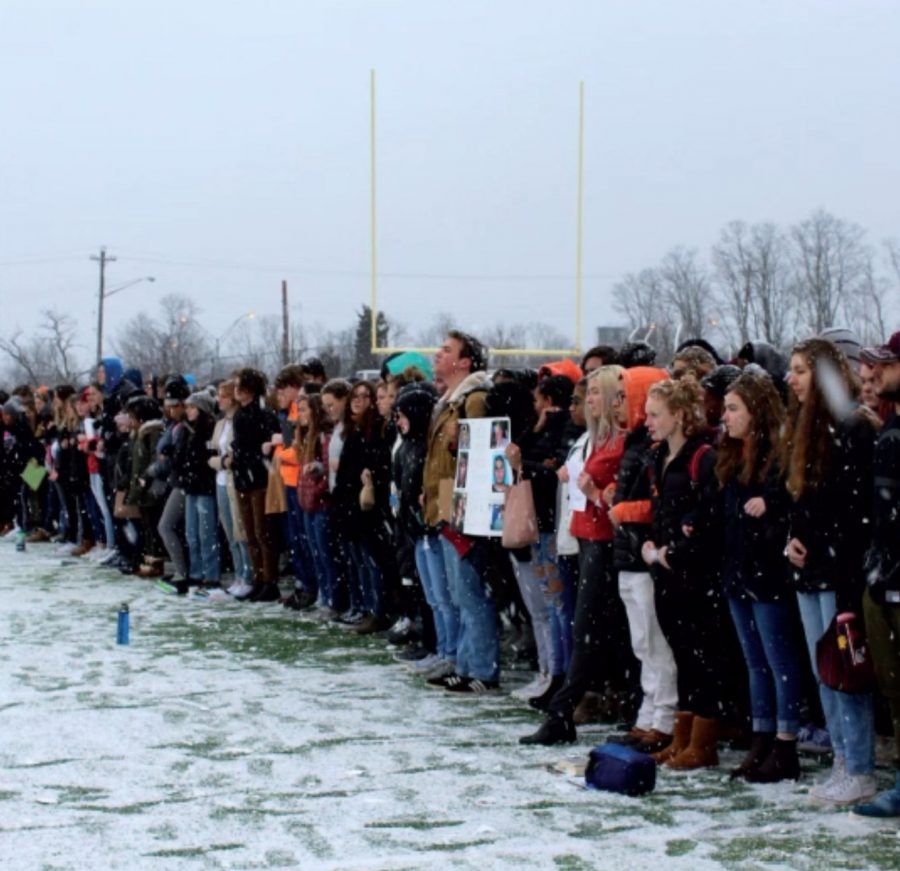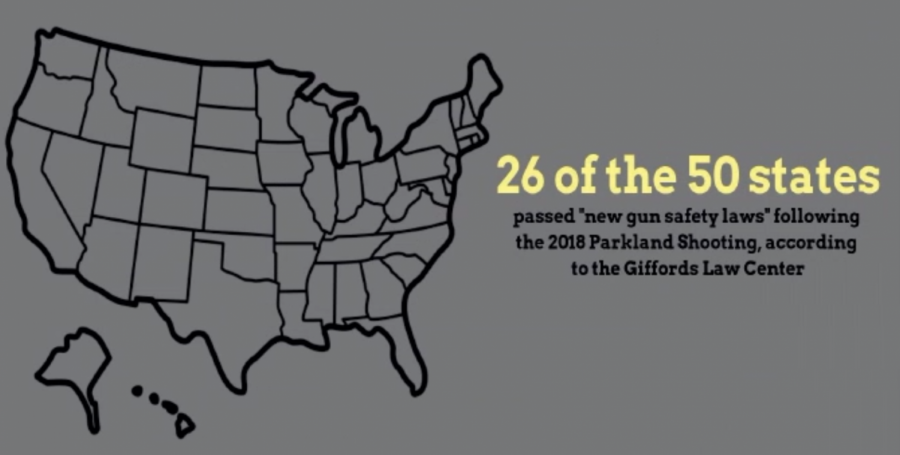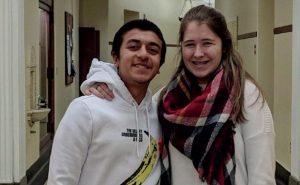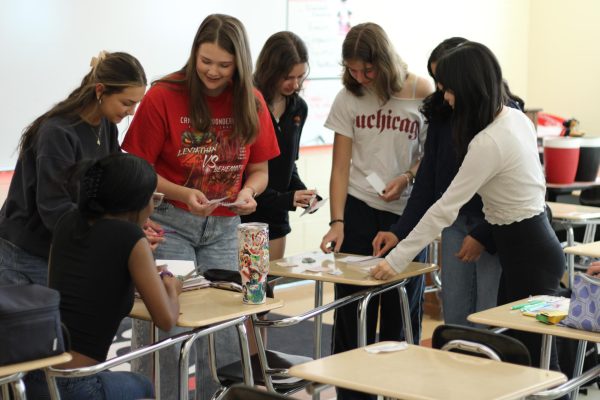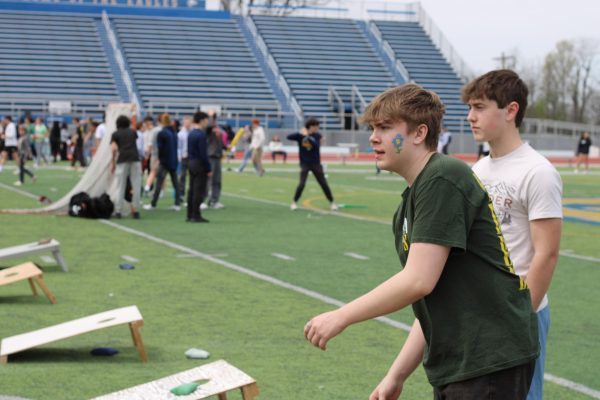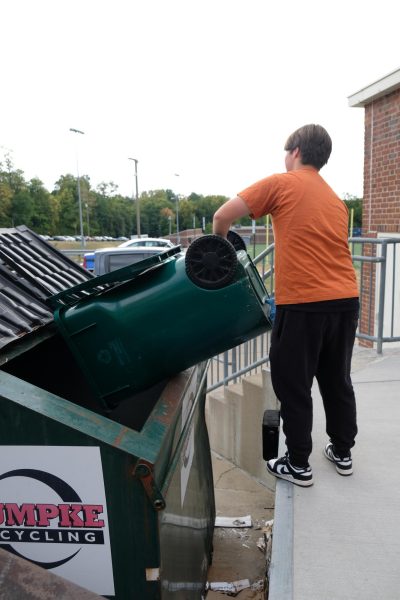One year after Parkland
On March 14, 2018, WHHS students walked out of class during third bell as a part of the National School Walkout. Students gave speeches, registered others to vote, and held a moment of silence for the 17 people killed one month earlier at Marjory Stoneman Douglas High School.
It was Valentine’s Day 2018 when a gunman opened fire at Marjory Stoneman Douglas High School in Parkland, Fla. This day was supposed to be filled with love, candy hearts and homemade valentines, but instead students hid in darkened classrooms, fearing for their futures.
When the gunman walked away with his guns, 17 students and faculty had lost their lives.
But among the death and loss of the day, something began to grow. “I feel a mix of anger, sadness, but mostly passion,” David Hogg, a survivor of the shooting, told BBC. Hogg was not the only student that felt this way.
Four days after the Parkland shooting, on Feb. 18, 2018, five students announced the March for Our Lives.
“The Parkland students, along with young leaders of all backgrounds from across the country, refuse to accept this passivity and demand direct action to combat this epidemic,” their mission statement said.
The Parkland students’ activism sparked a nationwide wave of walkouts, protests and marches calling for stricter gun control. They also inspired many WHHS students to activism, organizing their own walkouts and a visit to the Ohio Statehouse. This includes Yousuf Munir, ‘21.
“Prior to the Parkland Shooting and the Parkland kids stepping up and really pushing this movement and empowering like a lot of youth all across the country, I was not nearly as involved with activism,” Munir said.
Munir participated in walkouts at WHHS to continue bringing attention to gun violence. He also helped found the WHHS chapter of the Students Demand Action club, which remains active today.
But with the push for stricter gun control continuing almost one year after Parkland, what has changed?
“I think that it’s very clear that since the tragic shooting at Parkland, we have started to make a great push and the movement has really gotten a lot of power,” Munir said.
Nationally, there is a proposed bipartisan bill that would require universal background checks, introduced by Nancy Pelosi (D-Calif.) along with Peter King (R-N.Y.) and Mike Thompson (D- Calif.), according to the Washington Post.
Additionally, 26 states have passed over 60 new gun safety laws, as reported by the Giffords Law Center End of Year Report. Ohio passed HB 1, which helps to keep guns out of the hands of domestic abusers.
Ohio lawmakers also tried to pass a bill with a “stand-your-ground” provision in it, which would allow people to defend themselves with few restrictions, and often with firearms. However, after law enforcement and student testimony against the provision in the bill, it was removed from the bill, according to the Cincinnati Enquirer. It is unknown if similar provisions in a new bill will be re-introduced under the new Governor Mike Dewine.
Although legislation has been passed to attempt to curb gun violence in the United States, WHHS students, like Kayla Reidy, ‘21, still think there is more work to do. Reidy is also involved in the WHHS Students Demand Action club.
She is a proponent of the state of Ohio keeping “a registry of everyone who owns guns.” This could make guns at the scene of crimes easier to identify but would not be able to identify those who obtain guns illegally. However, maintaining a registry is currently “illegal,” Reidy said.
Along with legislation, school safety has entered the national conversation about gun violence. After the Parkland shooting, students at Marjory Stoneman Douglas High School faced new security measures, like having to carry clear backpacks. Students at WHHS also faced new security measures with the 2018-2019 school year.
Cincinnati Public Schools installed metal detectors and additional security personnel. However, not all students feel that this was an effective way to protect students. “Overall, I don’t feel any safer,” SENIOR Perri Wedlock said.
Wedlock largely attributes this to the metal detectors not being “taken seriously or used effectively.” However, she thinks “if anyone were to find a way to use them effectively, that would be good.”
On Feb. 14, 2019, it will mark one year since the shooting at Marjory Stoneman Douglas High School. It will be a day of renewed activism for some, a tragic day of remembrance for others. And for some, it will just be another hearts-and-flowers Valentine’s Day.

Your donation will support the student journalists of Walnut Hills High School. Your contribution will allow us to purchase equipment, cover our annual website hosting, printing costs and offset competition and conferences fees for students.




